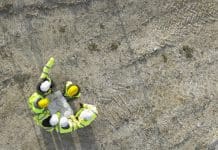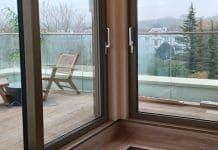Glyn Thomas, managing director of Building Consents, compares the scrutiny and accountability required in building safety compliance meetings to a harrowing scene from the movie ‘Marathon Man,’ emphasising the need for evidence and clear communication to ensure safety
The classic movie Marathon Man features a distraught Babe Levy (played by Dustin Hoffman) prone and strapped in a chair being asked that same question by a maniacal dentist named Szell; played by Sir Laurence Olivier at his best.
“Is it safe?” Szell asks.
“Yes” says Hoffmans character in reply. The dentist carries on drilling. “Is it safe?” he asks again. “No, No!” Babe replies.
It’s a horrific scene. Not just because of what you witness but because of the predicament that you know Babe is in.
He doesn’t know the answer to the question, because he doesn’t know what the question is.
You are uncomfortable, sharing his position and his pain. The drilling continues, much to the viewer’s excruciation.
OK. Relax. It’s only a movie … but at times, that same phrase does pop into my head at the oddest times. Sometimes, in design team meetings on an HRB in transition, my thoughts drift to that same question. “Is it safe?”
Communication gaps and accountability in building safety discussions
The problem in these meetings, however, is the same one faced by Babe because often, many on the call don’t know what the question means, and so are way off trying to give an answer.
The design team members all pop up in their Teams boxes, as in University Challenge, and they all know there’s a new regulator and a new system, but in many cases, the penny hasn’t dropped that the question that needs to be answered (Is it safe?) is directed at them.
Furthermore, there’s an expectation that they cannot only say reassuringly, “Yes, it’s safe” (or “no, it’s not” if it doesn’t comply) but also provide evidence as to why.
It’s at that point that the meeting goes quiet, and they all point fingers at each other. The client looks on bemused.
The Building Safety Act is causing a shift in professional accountability
The ability to give the right answer to the compliance question is no longer enough.
We have all witnessed a fire safety report, for example, being handed out with the smug air of “Trust me, I’m an engineer,” but now, when the statements in that report are questioned, that reassuring air turns to indignation and, in many cases, anger.
Some professional consultants are simply not used to their views being challenged and that is one of many cultural issues making life under the Building Safety Act so anxious.
Personal responsibility must be taken to ensure compliance
The key role of the Principal Designer is to ensure the team is competent, and scrutiny in itself can raise hackles. When you add in the need for reasonable timescales to review information, the atmosphere can get quite strained, especially if one area of design is reliant on another.
The referee role has been removed. No appointed RBCA or LA can give design advice and be part of the team, nudging and pushing to get to compliance, as has happened in the past.
Instead, the BSR is looking for a comprehensive solution – a knitting pattern for the contractor to follow without having to question building safety compliance, as it’s all been agreed in advance.
The PD needs to lead the team – but the team need to take responsibility for their actions.
Rationale behind safety decisions must be evidenced
And so, we return to the Marathon Man scene.
Compliant design and subsequent construction with minimum standards is not enough; there has to be evidence of how that decision was reached, what codes of practice or guidance were followed, and why.
In the end, it’s not about whether it’s safe… it’s also about how you made sure it is and can you show evidence.
So, close your eyes. Imagine you are in the dentist’s chair, and the dentist is spinning up his drill.
Is it safe?














